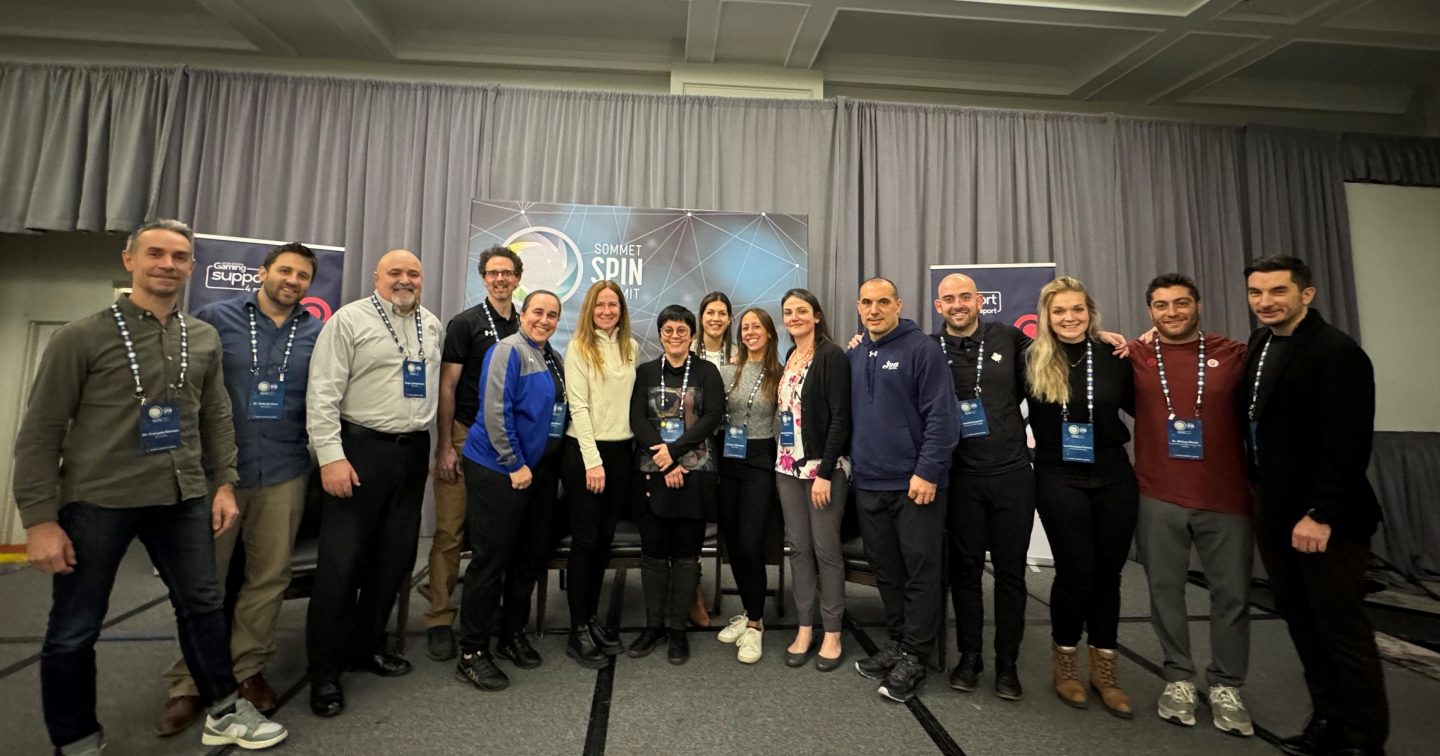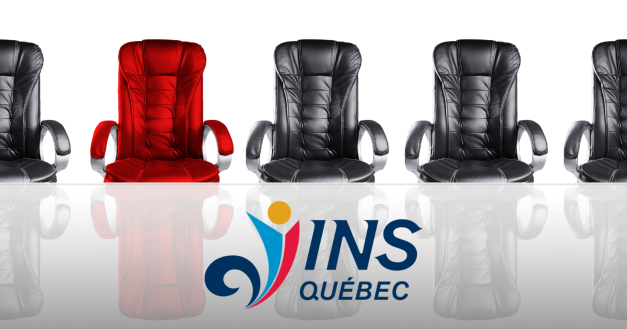SPIN Summit 2023: an opportunity to become an even stronger network

(Left to right: François Bieuzen, Félix Croteau, Roger Archambault, Mathieu Charbonneau, Geneviève Houle, Josiane Roberge, Suzanne Leclerc, Véronique Boudreault, Evelyne Telmosse, Catherine Naulleau, Nicolas Bourrel, Jonathan Lasnier, Lara Pomerleau-Fontaine, Mickey Moroz and Thomas Romeas.)
SPIN SUMMIT 2023: AN OPPORTUNITY TO BECOME AN EVEN STRONGER NETWORK
Once again, the SPIN Summit was an opportunity for INS Québec experts to share their knowledge and meet with many professionals of applied sport science, sport medicine and innovation from across the country.
Some fifteen INS Québec experts and collaborators took part in this major annual event, held in Halifax in December.
Every year, the SPort and INnovation Summit (SPIN) is a great opportunity to network and share the latest practices in sport science and medicine.
“For pan-Canadian networking, it’s always a success! It’s the ideal time to reconnect with experts from the same environment, who share the same responsibilities and performance objectives”, commented François Bieuzen, Director of Sport Sciences at INS Québec, underlining the leadership shown by the Institute throughout the congress. A source of pride for the entire organization!
Various meetings and presentations opened the discussion on subjects touching multiple fields of expertise, such as physical preparation and physiology, biomechanics, psychology or medicine. Of course, there was also talk of preparations for the Paris 2024 Games.

(Left to right: Evelyne Telmosse, Josiane Roberge, Mickey Moroz, Nicolas Bourrel, Félix Croteau,
Suzanne Leclerc, Thomas Romeas, Geneviève Houle and François Bieuzen.)
Sports Science Canada, an initiative of Own the Podium, was also at the heart of the discussions. The aim is to certify sports science and medicine professions in Canada, and to increase opportunities for collaboration. INS Québec experts are accredited members of this network.
During the Summit, INS Québec’s scientific contribution focused on medical monitoring of return-to-play after injury, the use of on-board sensors to facilitate performance measurement in aquatics and boxing, and artificial intelligence and virtual reality for performance analysis and training.
“Our presentations enabled us to stand out for our recent innovations in various fields of engineering. We were also able to show that our research in prevention and sports medicine is growing, providing useful information for our clinical practices as well as for the advancement of scientific knowledge,” explains Thomas Romeas, Lead of Research and Innovation.
INS Québec would like to thank its colleagues in Halifax for their warm welcome and for making the 18th SPIN Summit a resounding success!
A summary of studies by INS Québec experts
Title: Peak Torque Versus Rate of Force Development: Implications for Return to Play Assessments
Authors: CROTEAU, F., BRIAND, J., ROBERGE, J.
Institut national du sport du Québec
This study noted a strong correlation between peak torque and rate of force development in a group of 202 athletes. Preliminary results suggest that there may be a link between a below-expected rate of force development and a history of previous injuries. Rate of force development would be a better indicator than peak torque of impaired strength and inadequate preparation for return to play following injury.
Title: Fast-Tracking Concussion Recovery in Elite Athletes: The Power of Early Multidisciplinary Secondary Prevention
Authors: CROTEAU, F., ROMEAS, T., LECLERC, S.
Institut national du sport du Québec
This study, involving 161 athletes from 28 different sports, shows that elite athletes require longer recovery periods than previously reported for a return to performance. What’s more, athletes who had unlimited access to early, multidisciplinary care returned to competition significantly faster. They also consulted a greater number of experts during their recovery.
Title: Animation Database from Sport Videos using Deep Learning Techniques
Authors : FEIZ, H., LABBÉ, D., ROMEAS, T., CHARBONNEAU, M., FAUBERT, J., ANDREWS, S.
École de de technologie supérieure, Institut national du sport du Québec, École d’optométrie de l’Université de Montréal
The purpose of this study was to introduce a new method for analyzing boxing movements using computer vision and deep learning techniques. Four cameras were used to film twelve athletes in action, during 30 training bouts, for a total recording time of 90 minutes. The processing of these videos by a deep learning algorithm led to the creation of an artifact-free, three-dimensional database of movements, which could contribute to the automation of boxing performance analysis, as well as benefiting the creation of a training simulator.
Title: Quantification of punching characteristics during boxing training tasks – Preliminary data
Authors : CHARBONNEAU, M., CHARBONNEAU, Y., AUCLAIR, V.
Institut national du sport du Québec, Département des sciences de l’activité physique à l’UQAM, Boxing Canada
Boxers perform different punching tasks during daily training sessions, and this study aimed to quantify their characteristics using punch trackers and the athletes’ level of activity to determine how training sessions, with a coach or a bag, can be compared to sessions in combat situations. Six national team athletes were followed in this study, where velocity and intensity of punches were higher when training with a partner equipped with pads. Fewer blows were generally landed in combat situations than in other types of sessions. These data will enable coaches to better assess the training performance of their athletes.
Title. Movement irregularity and complexity changes in Paralympics swimmers completing an adapted aerobic step test.
Authors : SLOPECKI, M., CHARBONNEAU, M., LAVALLIÈRE, J-M., CLÉMENT, J., N. CÔTÉ, J.
Department of Kinesiology and Physical Education, McGill University, Institut national du sport du Québec, Swimming Natation Canada, École de technologie supérieure de Montréal
This study evaluated the fluctuating movements of six para-swimming athletes in action in the water using an inertial measurement unit. Movements became more complex and irregular as the exercise was separated into different speed stages, due to fatigue or acceleration performed to reach the target time. The study thus offers more information on how fatigue can influence athletes’ movements and technique.


